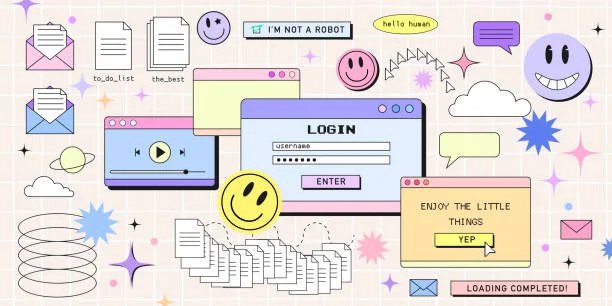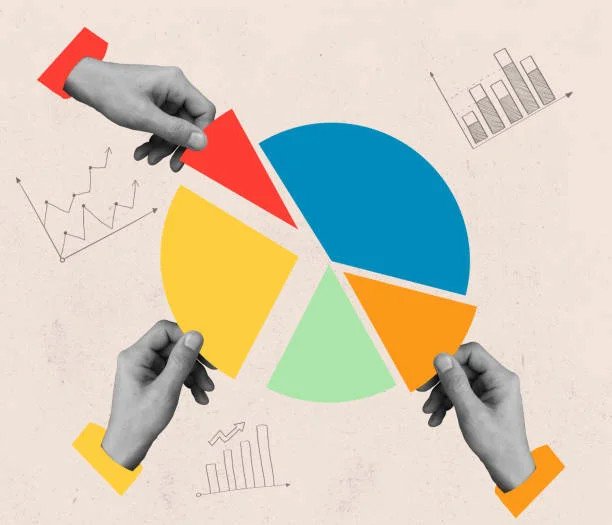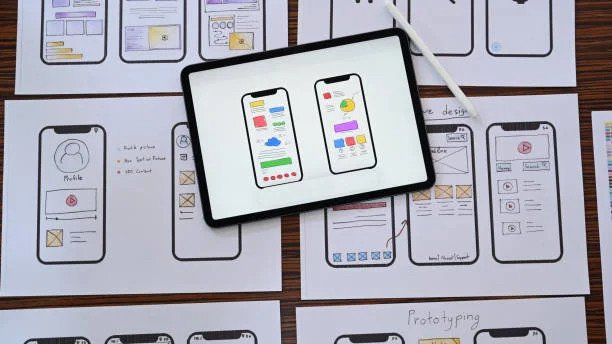Although the position of user experience engineer is becoming extremely popular among a rising number of businesses, the word “UX engineer” is not as widely known as the term “UX designer.” More and more businesses are trying to hire UX engineers in the present day.
While the term “designer” is commonly used to refer to the person tasked with enhancing a product’s user experience, a user experience engineer (UX engineer) is a front-end developer responsible for the underlying technology behind the design. In response to the growing need for UX designers, more and more institutions are offering training and education in the field, but the role of UX engineers should not be overlooked, as we’ll see in the following sections.
Also read: Is UI UX a Good Career Option for Designers in 2024?
Who is a UX Engineer?
User experience engineers, or UXers, are the front-end developers who ensure prototypes are practical. User experience engineers are called “unicorns” in the computer industry since they have both design and engineering skills.

UX engineers attempt to close communication gaps with designers and developers. UX engineers work with UX designers to solve problems and guide ideas throughout the visual design.
UX engineers are vital to the end-user experience of digital products. User tasks require interaction. This includes mouse clicks and finger swipes. UX engineer ensures both.
They must also anticipate interaction. This entails determining whether a user should tap once or twice or hold to activate a feature. UX engineers and designers must decide. Engineers understand how a user interacts with various design components, which helps UX designers do usability testing to gauge interaction efficacy.
UX engineers focus on user experience technical components, unlike software developers. User research guides development. This information is gained from UX engineer interactions with people or users’ experiences with a prototype. UX engineers reduce end-product friction.
Both UX designers and engineers work closely at Hapy Design to create a seamless experience for the customers. Designers are responsible for the whole Visual process while our UX Engineers work as front-end developers on the project to make their designs a reality.
Skills Required to Be a UX Engineer
How do you become a good UX engineer? Some talents are comparable to UX designers, but the tools and technical skills are different.
1. Debugging and Testing
Testing helps UX engineers detect and fix issues well before product releases. UX designers test prototypes. A UX engineer focuses on the product’s technical functionality. Testing a product tells a UX engineer whether code has to be adjusted or rewritten.
Testing enables user engagement missed during development. The prototypes that a UX engineer is tasked with creating can only be made through the use of code, and not web design software. This front-end development is helpful for the final product.
UX engineers use Chrome’s Developer Tools to prototype (Dev Tools). It’s a simple yet powerful tool that helps engineers edit code and inspects changes before finalizing. It’s a non-user-facing online prototype tool that helps improve user experiences.
Also read: 17 Web Design Mistakes You Should Try to Avoid
2. HTML/CSS/JavaScript
Mastering HTML, CSS, and JavaScript are critical abilities for a skilled UX engineer to have in order to know how products function both inside and externally and to design solutions that are both unique and valuable for consumers.

Once you have mastered them, you will be better equipped to study other languages and frameworks, such as Semantic HTML, jQuery, Angular, Package Managers (NPM), Vue, and React, all of which are helpful when developing more complicated digital products. If you have a good grasp of the fundamentals, you will be able to enhance your technical abilities and adapt when necessary, despite the fact that frameworks and languages evolve with time.
3. UI Principles
Understanding UI design concepts is a valuable ability for a UX engineer. This doesn’t imply a UX engineer creates wireframes; it implies they grasp user interface design concepts, making their work easier. It helps them communicate with UX designers, an important component of their profession.

Sizing and spacing digital buttons is a typical user interface design strategy. UX engineers design better products with standard dimensions. The UX engineer’s first priority should be lowering the number of mistakes made in the product, and UI principles can assist achieve this aim by making the product more intuitive to use.
4. Version control
Because of the iterative nature of the UX process, adjustments must always be made while developing a digital product. Git and TFS are both systems that may assist you in managing such changes; hence, it is beneficial to be familiar with how to utilize both of these platforms as well as others that are comparable. Another important soft talent to have here is adaptability! If you aren’t prepared for the ongoing shifts, you can have trouble succeeding as a user experience engineer.
5. Empathy
Many UX professionals would state empathy is their “superpower.” UX is about knowing your intended audience and creating for them. Empathy is understanding and sharing another’s feelings.
What makes this step crucial? UX engineers employ sympathetic observations to advocate for the user and the technical team’s capabilities. This soft ability is often ignored. Working well with people is key to success; lacking empathy can restrict dialogue and harm the end-user experience. Having the ability to put oneself in another person’s shoes is a great asset in teamwork, and it’s facilitated by empathy.
Who is a UX Designer?
A user experience designer (UX designer) is someone who takes part in all stages of the design process with the goal of improving the end result for the user. A UX designer’s responsibilities span the whole design cycle in startups and smaller companies. On the other hand, user experience (UX) professionals focus on a particular function inside huge businesses and extensive projects.

The following are some examples of occupations that need UX expertise:
- As a UX Researcher, your responsibilities will include research and user testing.
- Designers of user interfaces and the components that make them up
- Designers that specialize in “interaction” create features and tools that allow users to engage with one another and their devices.
- The DesignOps Manager or Leader is responsible for managing and leading the design operations of a company.
- These individuals all work in user experience design. They are just experts in one particular area of user experience.
How To Get A UX Design Job With No Industry Experience
Skills Required to be a UX Designer
UX designers are sometimes less technical aspects and have a broader range of skills required. Following are some of the important skills required to be a UX designer:
1. Strategic User Research
Research is absolutely necessary in order to ascertain the requirements of consumers, as well as how they will engage with the final product and react to it. Because of this, UX Designers need to have a solid understanding of research methodologies, including the collecting of qualitative and quantitative data, as well as the ability to organize and carry out research, as well to assess and evaluate the results of that study. User research is essential for the early detection of biases that might substantially impede the success of your product.

2. UI Design
Layout, typography, graphics, photos, and animated motion affect the user’s experience. Even while user experience designers might not be the ones who actually put the parts together (it is typically done by their colleagues who specialize in user interface design), they should have a good understanding of which design aspects will improve user interactions.
3. Wireframing and Prototyping
UX Designers must understand how people engage with information flows. To apply this experience to product design, they must be effective wireframers and prototypers, using Sketch and InVision to bring their concepts to life.

A prototype isn’t the final product. It’s used to communicate the final design’s user-facing parts to Graphic Designers, UI Designers, Developers, and other team members.
4. Responsiveness
The idea of responsive web design, which guarantees that designs appear differently across multiple devices, should be known to UX Designers. This is becoming increasingly significant since mobile phones now account for more than half of all internet traffic worldwide.

Also read: How to Become a UI/UX Designer?
Is it possible for UX Engineers to also be UX Designers?
The majority of the time, UX engineers come from a software engineering or product background. They often major in computer science or interface between humans and computers (HCI). They may not be designers, but they are familiar with the design process from beginning to end and know how to incorporate UX and design thinking concepts into their work.
The majority of UX design tasks do not include active participation from UX engineers. Their major responsibility is to translate the prototypes created by designers into code that can actually be used.
What Makes UX Engineers So Desirable?
Handoffs in design are notoriously difficult to execute in many different types of businesses. The communication gap between designers and engineers is a major roadblock in the development process.
By eliminating this obstacle, organizations may decrease the amount of time it takes for their products to reach the market, which in turn saves them money and boosts their competitiveness. This is where user experience (UX) engineers come in, which is why there is a demand for them.
In addition to this, the function that UX engineers play in managing and growing design systems is critical. A growing number of businesses have been working to improve their design processes, which has led to an increase in the need for UX engineers recently.
Who Do You Need? UX Engineer or UX Designer
The majority of start-ups and small businesses do not require the services of a user experience engineer. Because designers and developers collaborate closely in these smaller teams, the requirement for a specialized user experience engineer is decreased.
UX engineers have the greatest influence in large firms because of the difficulty that comes with collaborating between designers and engineers. These engineer/designer hybrids work with designers to translate concepts into code and interact with design and engineering teams to create the final product while keeping the designer’s vision.
UX engineers assist designers to turn static prototypes into working code components.
Also read: How to Build an Effective Product Design Team
Do UX Engineers Code?
Since user experience engineers started out as front-end engineers, they have a strong command of fundamental front-end programming languages such as HTML, CSS, and Javascript.
Because they are in charge of the creation of layouts and UI components, UX engineers often need to be familiar with front-end frameworks, such as React or Angular. However, this need might vary depending on the organization or project.
How Do UX Designers and UX Engineers Collaborate?
Ideas develop in close collaboration between UX engineers and designers. In order to keep designers on track when they are wireframing and low-fidelity prototyping, it is the responsibility of the UX engineer to provide assistance in the development of concepts by seeing them through a technological lens.

During the testing phase, UX engineers also collaborate with UX designers. Instead of actively taking part in the testing process, user experience engineers assist designers in creating solutions using the results.
Also read: Difference Between Web Design and Web Development
UX Designer Tasks
UX designers are responsible for making products more appealing to customers by incorporating feedback from users and data gleaned through workflow analysis. UX designers must be creative, technical, and problem-solvers. Major tasks include:
- Working side-by-side with customers to achieve their objectives
- Communication of User Research Findings to Stakeholders
- Creating user profiles and use cases
- Implementing Usability Tests
- Making Sitemaps and Screen Flows, Wireframes and Storyboards
- Making prototypes
- Taking into account user input and behavior, then making small adjustments to further refine the experience
- Providing input on content creation
- Analyzing the Market and the Competition
UX Engineer Tasks
Major roles of UX engineers include:
- High-fidelity prototyping during the design process.
- Using coding languages (such as HTML, CSS, and Javascript) or front-end frameworks (such as React) to create prototypes.
- Collaboration with UX designers on prototyping and providing them with prototypes for usability testing
Typical UX Designer/Engineer Workflow
Take a look at this sample workflow for a UX designer or UX engineer utilizing the design thinking methodology.

- Empathize
- Defining
- Ideation
- Prototyping
- Test
1. Empathize
Most UX development is done at the empathize phase. They do UX research and analysis.
Although UX engineers don’t often take part in preliminary research, they may look back to it, later on, to better understand consumers.
2. Defining
It is also the job of a UX designer to oversee the defining stage. They are required to do research in order to discover user problems that the product should address.
3. Ideation
UX engineers participate in the ideation phase of design thinking. When issues arise, UX designers and UX engineers work together to find viable solutions.
UX designers are often seen in the middle of design sprints, meetings, and other forms of brainstorming.
4. Prototyping
UX designers and UX engineers collaborate to produce prototypes. Prototyping is done by UX designers using design tools, while UX engineers are responsible for writing code.
5. Testing
It is the responsibility of UX designers to conduct usability testing on all prototypes. They discuss the findings with the UX developers so that they may work together to redesign and make adjustments.
UX Engineers & Designers Handoff Collaboration
UX engineers transform designs into code. Traditionally, developers only collaborated at handoff.
There would be a great deal of back-and-forth contact between designers and engineers as they worked to turn designs into a finished product. Misinterpreting designs causes team tension.
UX engineers can start development before the handoff if they’re embedded in the design process. They can also assist designers to create developer-friendly documentation and instructions.
UX engineers collaborate closely with designers during the iterative process of turning designs into code. Next, UX engineers submit their code for evaluation.
Since the majority of the front-end UI work has already been completed by the UX engineer, the development team merely has to integrate it with the backend and fine-tune the UI. The UX engineer translates designs and prototypes for the development team.
Final Thoughts
Specifically, UX Designer duties include technologically-oriented tasks including data analysis, information architecture, and visual design. A UX engineer is expected to have expertise in front-end development, interaction design, and coding. Engineers earn more than designers with equivalent levels of expertise due to the front-end work they do.
Starting out as a UX designer is a good stepping stone to taking on the role of UX engineer but if you are looking to enter the engineering side, it’s better to start with a proper college degree in software engineering with your focus on front-end development.
Also read: SaaS Product Design: Trends & Best Practices
Get a Great Product Design with Hapy Design

We have industry experts and we excel at product designing services at Hapy Design. We put the customer at the heart of the whole design and development process to create a seamless experience with a great UI/UX.
Are you looking to get a product that keeps your customers hooked?
Also read: 14 Tips For Choosing A Web Design Company
FAQs
What is the difference between a UX designer and a UX engineer?
The “designer” job can probably be most frequently applied when referring to a person responsible for improving a product’s general user experience while the UX engineer is a frontend developer focused on a particular aspect of design.
Do UX engineers make more than UX designers?
The average salary for a UX engineering professional is $109,679. This is 16% lower than the average salary of a UX designer and 3.7% above the average salary for front-end developers.
Can a UX designer become a UX engineer?
Front-end developer: It can be difficult to change careers to become a UX Engineer. UXE developers already possess the majority of the skills required but must learn the UX design process. Product Designers: Product designers and UX engineers are very simple.
What is a UX engineer?
A UX designer creates and creates software and digital products that use UX principles. UX engineers typically deal with the front end of the product—the user-facing parts the users are interacting with, such as buttons.
